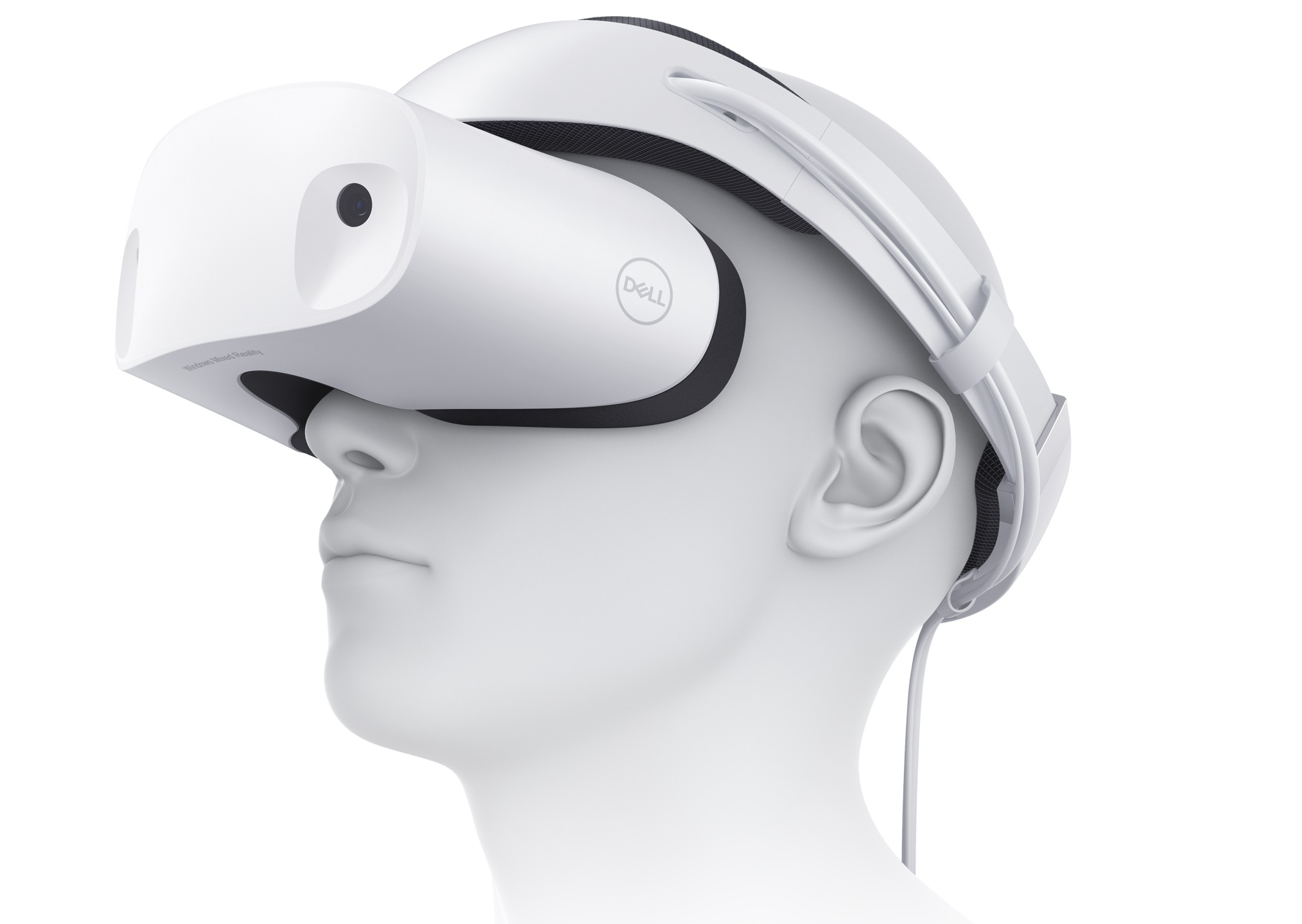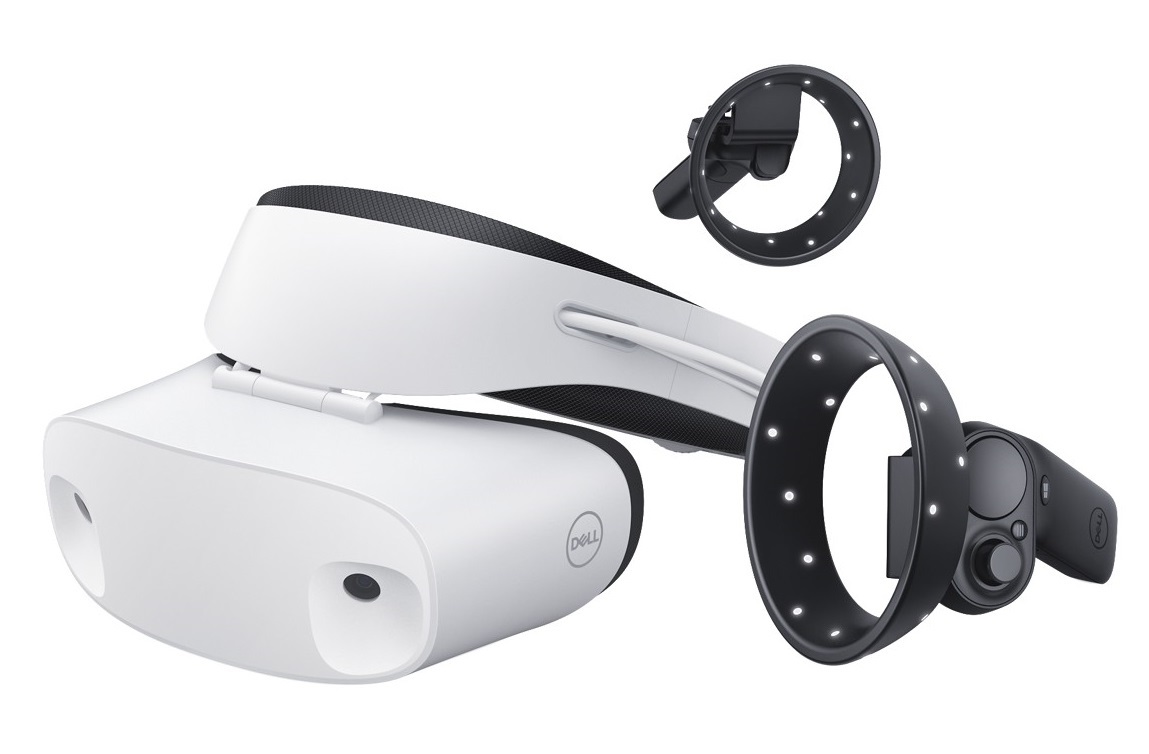Dell Enters VR Arena With 'Visor' HMD
Dell announced its own version of a virtual reality head mounted display (VR HMD) at IFA, joining the ranks of other mainstream manufacturers that are adopting Microsoft’s Windows Mixed Reality platform to bring an HMD to market.
The Dell Visor features two 1440 x 1440 LCD panels (for a total resolution of 2880 x 1440) that can “flip up” to let you see the real world around you without completely removing the headset. The faceplate is well cushioned, and the headband is easily adjusted using a thumbwheel. The company claimed that it's comfortable to wear, even with glasses, but we didn’t get the chance to try it on for a demo.
Similar to Acer’s Mixed Reality HMD, the Dell Visor is a tethered headset (USB and HDMI cable) that connects to a Windows PC (with at least the baseline specifications) and features inside-out 6DoF tracking; the headset doesn’t require external cameras or lighthouses to track its position in space. Boundaries are setup by outlining the play area with the HMD, but maximum tracking space wasn’t disclosed.
When asked what the main difference between the Dell Visor and its competition was, a representative explained, “Ours is white.” Indeed, the Visor features a white (almost Apple-esque) finish, with an anti-stain coating to keep it clean. The representative went on to explain that Dell’s design keeps comfort and convenience in the forefront, evidenced by the flip-up display, ergonomic headband, and gratuitous face padding. The company hopes that this will be enough to differentiate the Visor in an ever-growing field of VR HMDs.
The Dell Visor doesn’t ship with a controller of any kind, but it’s compatible with Microsoft’s new Mixed Reality Controllers, which are tracked by the headset’s external sensors. Dell is offering the headset for $349.99, and you can order the controllers with them for another $99.99. For reference, the Acer HMD plus controllers bundle is $400.
The Dell Visor is expected to arrive mid October.
Get Tom's Hardware's best news and in-depth reviews, straight to your inbox.
Derek Forrest was a contributing freelance writer for Tom's Hardware. He covered hardware news and reviews, focusing on gaming desktops and laptops.
-
alextheblue I'd pay a few extra bucks for the Dell variant if it's more comfortable. We need a comfort-testing review with all the new entry-level headsets! Since they have the same specs (for the first gen at least), the only substantial differences appear to be comfort-related.Reply -
cptwhite 1440p per eye, flip up design, no external sensors needs, 6DoF, $359....definitely interested.Reply -
dark_lord69 Nice!Reply
Higher res than the rift and the other features seem to hit all the right notes...
The only thing left to be desired is a wireless connection to the PC.
My next HMD purchase won't happen until we get 4k, wireless and a larger FOV.
(Like StarVR without the wires.) -
Tmanishere I just like that it doesn't need external camera or lighthouses. This would be very convenient for small room setup.Reply -
bit_user I think the real point of this isn't to build a better or cheaper HMD, but for Dell to have their own to bundle with their systems. It gives them more branding opportunities and slightly better margins. The underlying hardware might be just a reference design from MS.Reply -
ccressall I'm anxious to see specs on this. To me, the current leaders in MR are still Rockwell Collins Coalescence at the ultra high end (military grade) and VRVANA Totem at the medium/high end. HTC Vive with it's front facing camera is very, very underrated for it's price/performance.Reply

